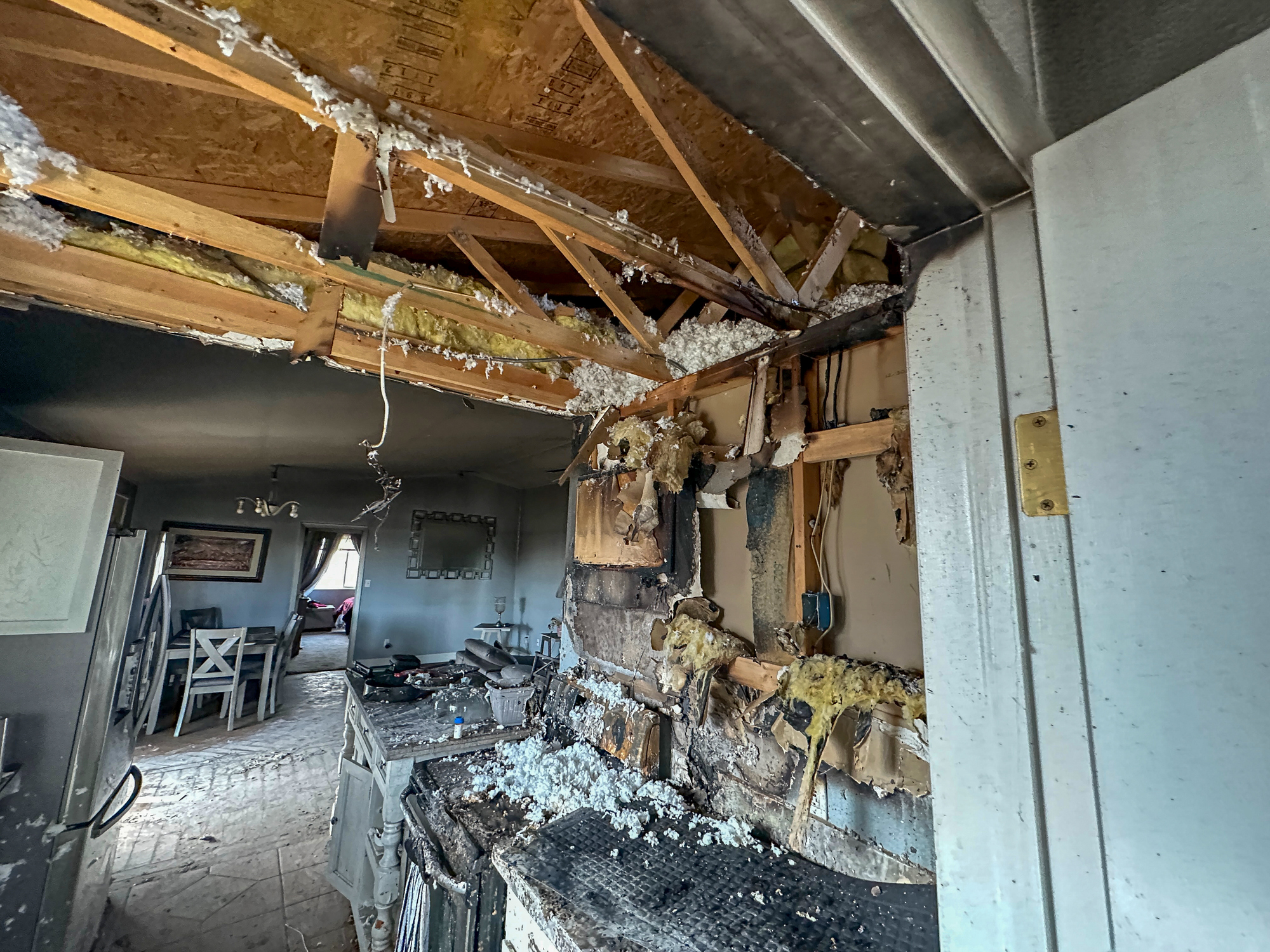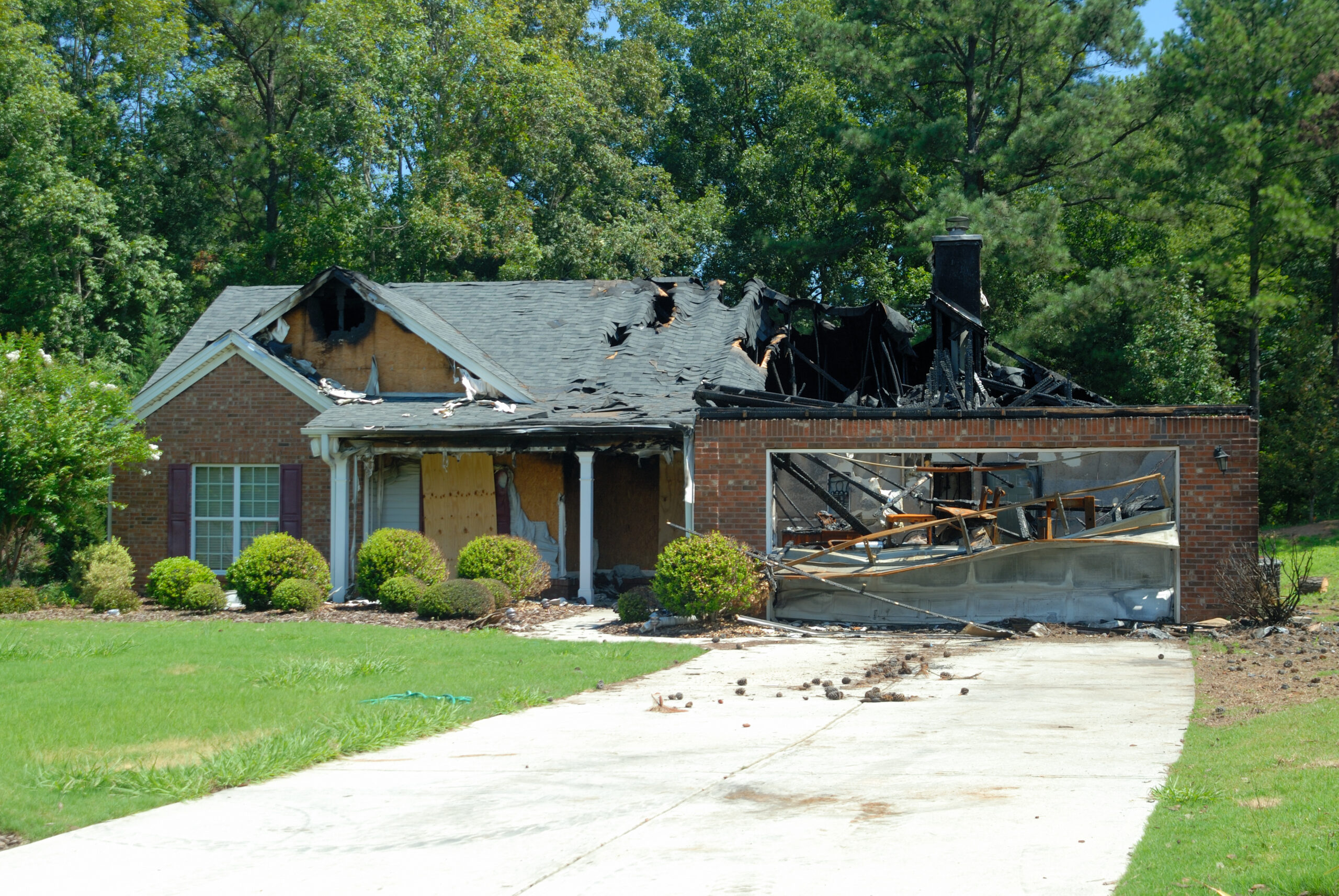
Ceiling water damage is one of the most common issues in homes around Cleveland Metro West, and it can sneak up on you quickly.
What starts as a small mark or sagging spot can quickly become a serious problem, leading to mold, ruined insulation, and even structural damage if left untreated. The good news? Most ceiling water damage comes from a few common causes. Once you know what to look for, it’s easier to act quickly and stop it from worsening.
Let’s examine what might be causing the water damage in your ceiling and what you can do about it.
If you’ve spotted signs of ceiling water damage in your home, don’t wait for it to get worse. Contact Paul Davis today for trusted water damage repair.
Identifying Water Damage In Your Ceiling
Ceiling water damage often starts with subtle signs, but it can quickly become a headache if ignored. Look for things like yellow or brown stains, bubbling or peeling paint, soft or sagging spots, or a musty odor coming from the ceiling. You might also hear dripping sounds, especially after a storm or while someone’s using the shower upstairs.
Even if the damage seems small, it’s important to take it seriously. Water can spread fast behind the surface, weakening drywall, soaking insulation, and creating the perfect environment for mold to grow. The longer you wait, the more expensive and complicated the repair becomes. Catching and fixing it early is the best way to protect your home and avoid a bigger mess later on.
What Causes Water Damage?
Ceiling water damage doesn’t just happen out of nowhere; it usually comes from a specific issue in your home. Knowing the source is the first step to stopping the damage and preventing it from returning.
Roof Leaks
A damaged or aging roof is one of the most common causes of water-damaged ceilings. Missing shingles, worn flashing, or clogged gutters can all let rainwater seep into the attic and eventually drip down into the ceiling.
Leaky Pipes
Pipes running through your ceiling or between floors can develop leaks due to age, corrosion, or loose fittings. This often happens in bathrooms, kitchens, or laundry rooms and can cause slow, hidden damage over time.
Faulty Appliances
Washing machines, dishwashers, and water heaters can all leak if a hose breaks or a seal wears out. If these appliances are located on an upper floor or near the ceiling structure, a small leak can lead to big problems.
HVAC Condensation
Air conditioners and HVAC systems can cause water damage when the drain line clogs or the unit isn’t draining correctly. Over time, excess moisture builds up and can leak into nearby ceilings or walls.
Bathroom or Shower Leaks
Water from showers, tubs, or sinks can slip through worn-out caulking or cracked tiles and seep into the ceiling below. These leaks are common in second-story bathrooms and often go unnoticed until the ceiling shows signs of trouble.
Importance Of Getting Ceiling Water Damage Professionally Remediated
Ceiling water damage often goes deeper than what you can see. A small stain might mean hidden mold, soaked insulation, or structural issues. Professional restoration ensures the source is fixed, the area is fully dried, and damage is safely repaired, helping you avoid bigger problems and expensive repairs later.
Choose Paul Davis For Water Damage Restoration Services
At Paul Davis Restoration of Cleveland Metro West, we’ve been helping local homeowners recover from water damage carefully since 1966. Our team is trained to handle every step of the process, from finding the source to restoring your ceiling so you can return to normal faster. With decades of experience and a reputation for dependable service, we’re the team you can trust when it matters most.
Dealing with ceiling water damage? Don’t wait for it to get worse. Contact Paul Davis today to schedule professional water damage restoration.





